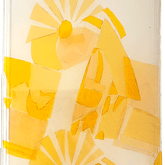ROZIMAH ANWAR




THE WINDOW PROJECT
A retail window is designed for Maison Margiela with a collaboration to a chosen practitioner, Laszlo Moholy-Nagy. This project creates a platform for exploration and using different hands-on methods learned through workshops to develop the window process hence the term “Thinking through making”.

The use of white is common in most of the branches of Margiela's boutiques.

‘Grunge’ techniques such as deconstruction, recycling and using raw finishes are used in Margiela's designs.

White stitching were to remain visible as having exposed seams are part of their influence of deconstruction.

The use of white is common in most of the branches of Margiela's boutiques.
THE BRAND:
Maison Margiela
Deconstruction is a key factor which influenced the designs for the Maison Margiela collection and the use of unconventional materials also played a part in contributing to the concept and aesthetic of the designs.

Moholy-Nagy experimented with light and materials to create camera-less photographs called Photograms.

Other than 2D artworks, sculptures and kinetic artwork has been explored by Moholy-Nagy to carry across his theory of light.

In his abstract painting, Moholy-Nagy used geometrical shapes and emphasizes traslucency over solidity.

Moholy-Nagy experimented with light and materials to create camera-less photographs called Photograms.
THE PRACTITIONER:
Laszlo Moholy-Nagy
Moholy-Nagy’s aesthetic theory of light is that “light as a matrix of art and art as light”. He explored the relationship between light and shade, transparency and form throughout the different mediums in his artwork.
THE PROCESS
A1 Final Window
A6 Window Process
.jpg)
A4 Window Process
.jpg)
.jpg)
THE WINDOW
Deconstructing the geometric shapes in the textile pattern and introducing voids, create pockets of shadows. The use of mesh combined with plaster as the background is to replicate Margiela’s use of raw finishes as one of his techniques to bring about deconstruction. The use of different materials for the lines and shapes of the textile was to bring about a varying level of translucency with some spaces being more dense and solid, whereas other spaces are hollow or slightly covered.















